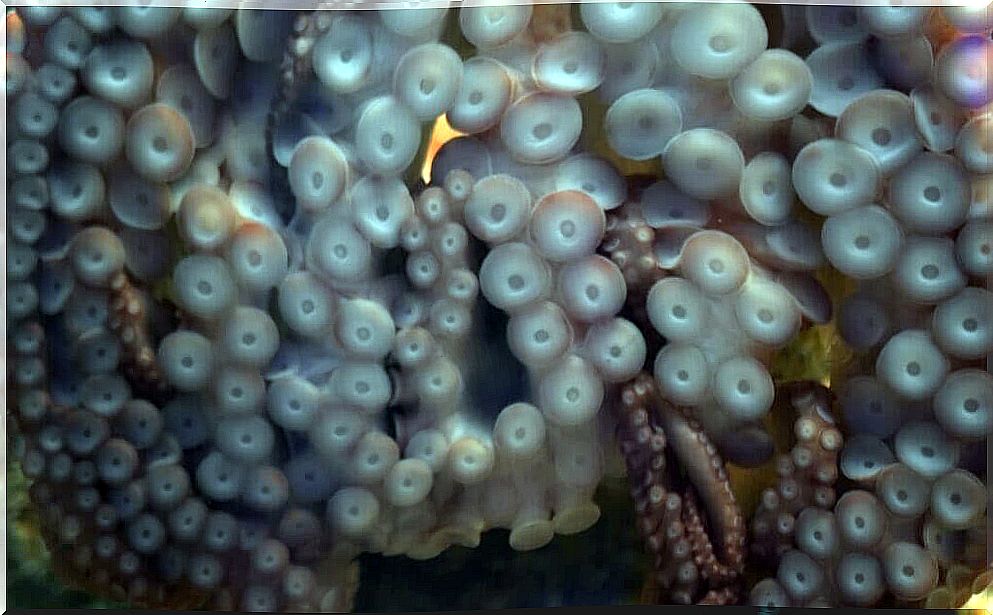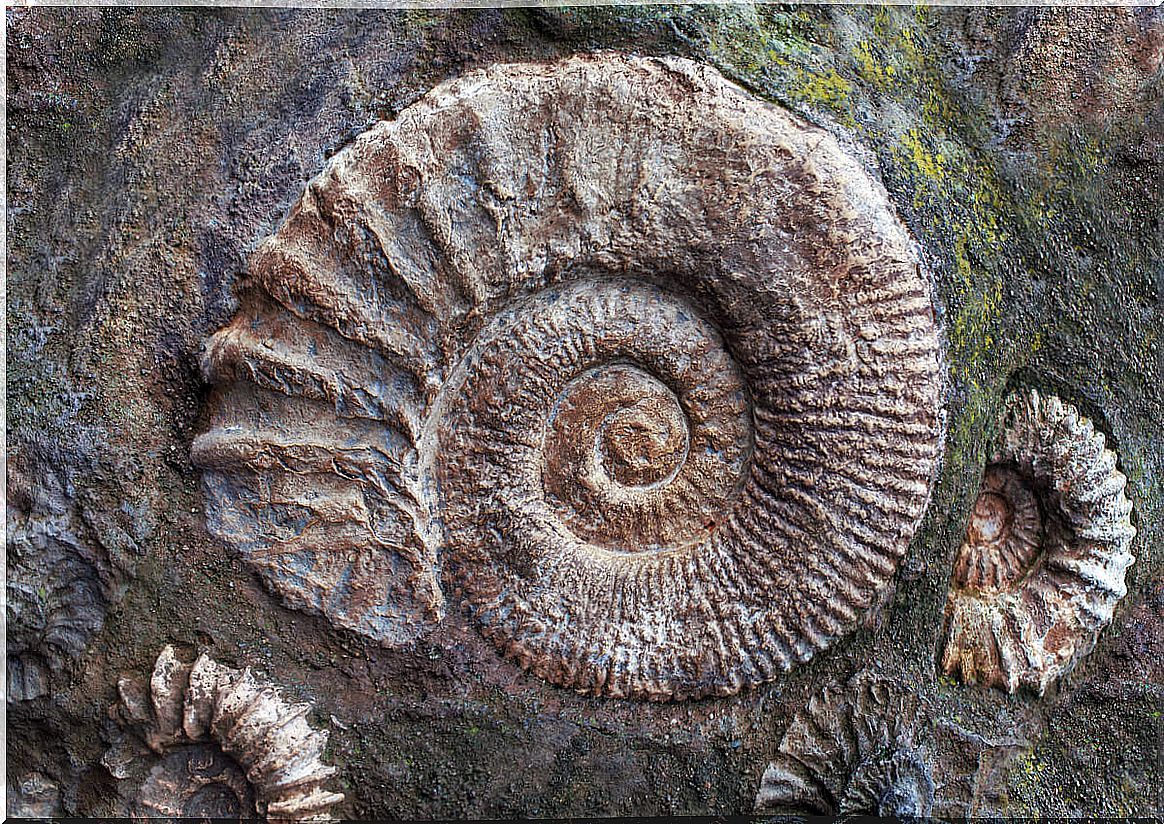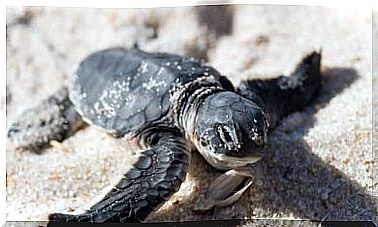Nectocaris Pteryx: The Grandfather Of Cephalopods 500 Million Years Ago

The evolutionary history of molluscs – and specifically the origin of cephalopods – still holds many mysteries. The reclassification of an ancient animal fossil, called Nectocaris pteryx , has shed some light on these issues.
This animal was discovered in 1976 from a single specimen that was part of the Burgess Shale formation, one of the most exceptional fossil deposits ever found. Its strange appearance and poor condition prevented it from being properly classified.
However, 91 new fossil specimens allowed us to discover the truth about this animal and draw conclusions about the first cephalopods that inhabited the Earth. Keep reading if you want to learn more about it.
The story of Nectocaris pteryx
The first specimen of Nectocaris pteryx was quite degraded, which made its identification extremely difficult. For this reason, this ancient creature was classified as an ancestral arthropod, a group to which crustaceans and insects belong. Also included in the chordates, the phylum that contains mammals and reptiles.
However, an article published in 2010 in the journal Nature was able to examine the many new specimens discovered. Thanks to this, researchers have clarified the characteristics and habitat – temporal and spatial – of this animal in the history of living beings.
This study revealed that this animal is actually the oldest cephalopod ever found. This makes it a possible ancestor of today’s octopus and squid.
Nectocaris existed about 500 million years ago, so it stretched the estimated date of origin of cephalopods by another 30 million years earlier. This indicates that cephalopods emerged early in the evolution of multicellular organisms and are therefore one of the oldest groups of animals in the world.

Characteristics of Nectocaris pteryx
These remote cephalopods were very small. The specimens found vary in size, but measure about 3.7 centimeters on average. Small size was a common feature of cephalopods at the time.
The body of this animal was flat, soft and rhomboidal in shape. It had a fin that descended on either side of its body and was larger near its head. Unlike other ancient cephalopods, Nectocaris pteryx had no shell.
Its small head appeared at the end of a short neck. It was possible to find 2 long tentacles, which are flexible and taper to the tip. The head also had 2 eyes, separated by small stems or peduncles. It is possible that these eyes were complex, with a structure similar to a camera, as in today’s octopuses.
Finally, one of the most important aspects was the presence of a siphon. This flexible structure appeared in the ventral part of the neck, widening as it moved away from it and connected to an internal cavity, where the gills were located.
Archaic Cephalopod Ecology
This mollusk was able to actively swim – thanks to its lateral fins – and could give great accelerations, expelling water through the siphon. Probably lived near the bottom of the sea, swimming in search of food.
In addition, Nectocaris pteryx had predatory or scavenger habits. It fed on small, soft animals at the bottom of the sea, which it captured and manipulated with its long tentacles.
It is not yet known exactly how it consumed its prey, since the oral tract of this animal was not preserved. The rest of the cephalopods have a sharp beak and the radula – a serrated tongue with which they scrape food. These structures may not have fossilized or were not present in Nectocaris.
Some evolutionary mysteries
In addition to the mouthparts, the existence of this animal raises other questions about the evolution of molluscs, which need more fossils to be resolved.
One of them is related to the tentacles. The Nectocaris has only 2, which may mean that cephalopods started with a small number of tentacles that increased over the years. Another possibility is that the ancestors of Nectocaris had more tentacles, but this animal has lost or fused them.
Another of the most intriguing problems is the absence of a shell. It is believed that the ancestor of these animals was similar to a monoplacophore, whose shell would have undergone modifications to house gas and achieve buoyancy.
Nectocaris did not have a shell, but could float and swim freely. Therefore, cephalopods may not descend from an ancestor with external protection. It is possible that the shell of nautilus, ammonites and other relatives was a later adaptation.

As it was possible to observe, this ancient cephalopod provided answers to several questions about the evolution of molluscs, but it also generated others. The relationships of these animals are still largely unknown, so more research is needed.









